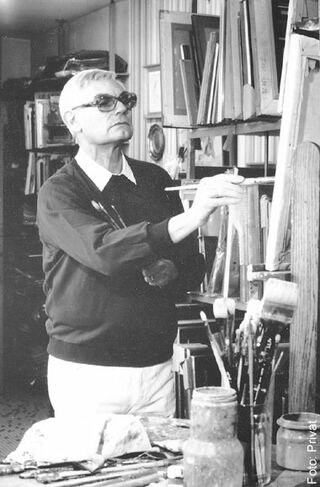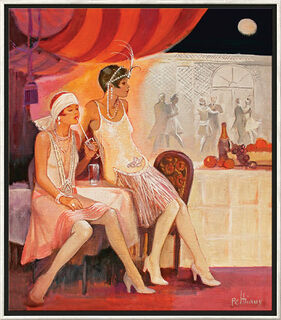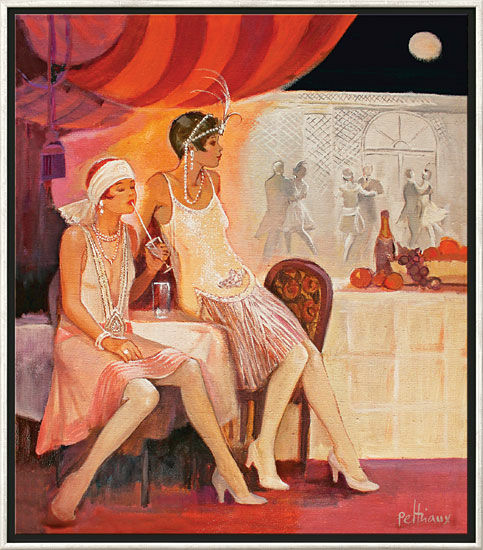Picture "Au Claire de la Lune No. 81", framed


Picture "Au Claire de la Lune No. 81", framed
Quick info
limited, 199 copies | numbered | reproduction, Giclée print on canvas | on stretcher frame | framed | size 74 x 65 cm (h/w)
Detailed description
Picture "Au Claire de la Lune No. 81", framed
The work of Frenchman Bernard Peltriaux celebrates a period long gone: the 1920s when Paris was the centre of the world in terms of art and style. Not only fashion changed but also the role of women. Peltriaux's elegantly dressed ladies present themselves as strong, even charismatic women throughout. They are modern women who know very well how much they differ from the generations of their mothers and grandmothers - and how much they open up new paths and opportunities in life for their daughters one day.
Authentic Reproduced using the Fine Art Giclée process on 100% cotton and mounted on a stretcher frame. Limited and numbered edition of 199 copies. Stretcher frame size 70 x 61 cm (h/w). Framed in a sophisticated solid wood studio frame with a shadow gap. Size 74 x 65 cm (h/w).

About Bernard Peltriaux
1921-1999
Bernard Peltriaux was born in Reims, which is in the northeast of France. He went to René Jaudon's studio in Paris after finishing his art studies. Impressed by the social life of the time, he slowly became a typical artist of the French scene. Sensitive, rich in detail and with a touch of exclusivity, Peltriaux painted scenes at horse shows with beautiful women, life in the bistro, in the bar and the lido.
The French painter's great theme was the woman of the Belle Époque and the "Roaring Twenties" in Paris between the world wars. However, it would be a misunderstanding to see him as a painter of "historical" subjects, as he had only experienced this period as a youth. Peltriaux's choice of subject is justified differently: It gives him the opportunity to imbue his female figures with the glamour of those times when not only fashion but the role of women was changing. Peltriaux's elegantly dressed ladies show themselves throughout as strong, even charismatic women. They are modern women who know very well how much they differ from the generations of their mothers and grandmothers – and how much they thus open up new paths and opportunities in life for their daughters one day.
Peltriaux's works have won many awards and are in private collections in France, Portugal, Morocco, Germany, the USA, Belgium, Vietnam and Iran.
Depiction of typical scenes from daily life in painting, whereby a distinction can be made between peasant, bourgeois and courtly genres.
The genre reached its peak and immense popularity in Dutch paintings of the 17th century. In the 18th century, especially in France, the courtly-galant painting became prominent while in Germany the bourgeois character was emphasised.
Giclée = derived from the French verb gicler "to squirt, spurt".
The giclée method is a digital printing process. It is a high-resolution, large-format printout on an inkjet printer with special different-coloured dye- or pigment-based inks (usually six to twelve). The colours are fade-proof, i.e. resistant to harmful UV light. They have a high richness of nuance, contrast and saturation.
The giclée process is suitable for art canvases, handmade and watercolour paper as well as for silk.


